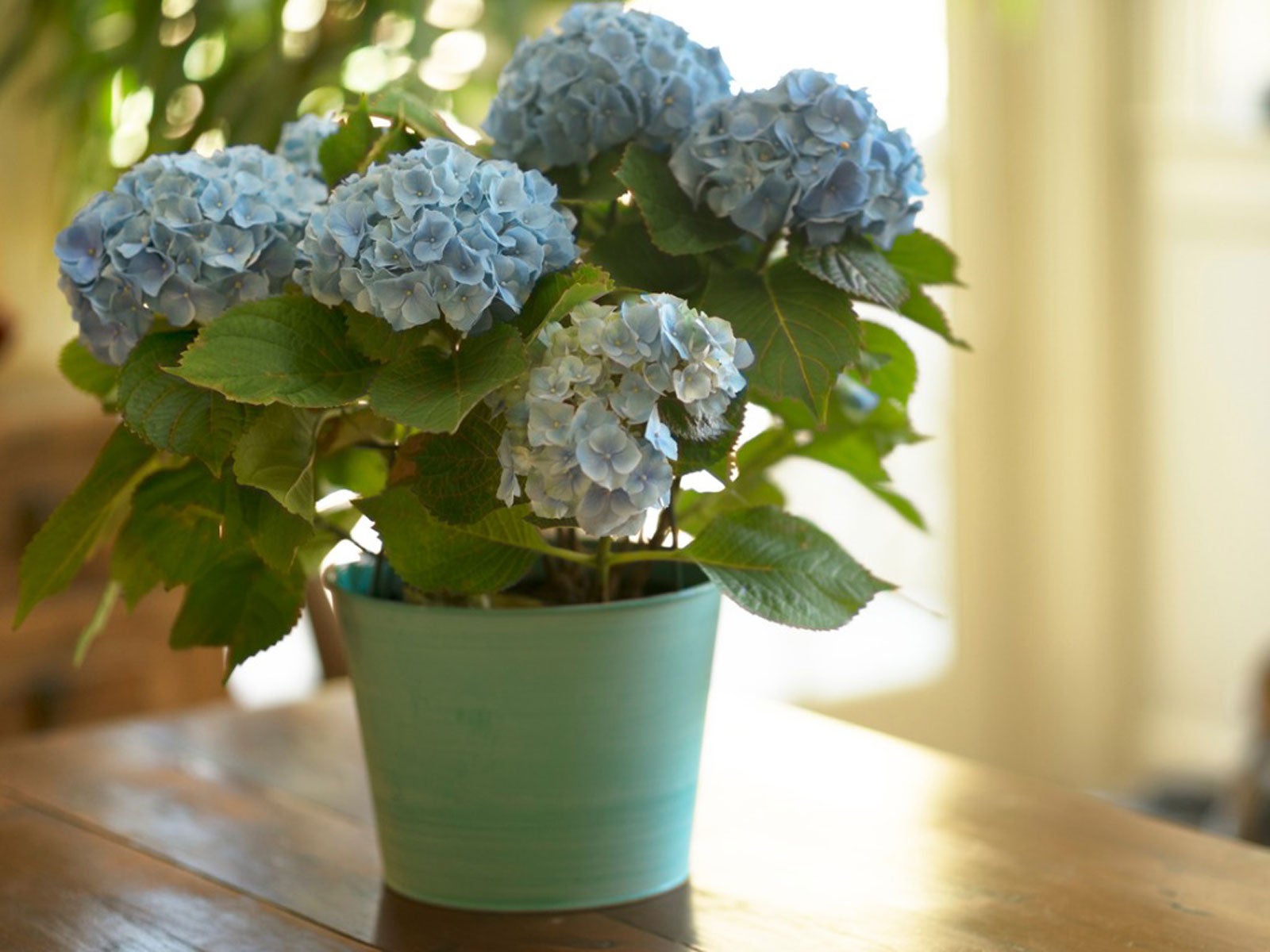
Source www.gardeningknowhow.com
Welcome to our comprehensive guide on indoor hydrangea plant care. Hydrangeas are popular flowering plants known for their beautiful and vibrant blooms. While typically grown outdoors, it is possible to grow and care for hydrangeas indoors, allowing you to enjoy their stunning flowers year-round. In this article, we will provide you with essential tips and tricks to ensure your indoor hydrangea thrives and blooms to its full potential.
Whether you are a seasoned indoor gardener or a beginner, this article will provide you with valuable insights and techniques to keep your hydrangea healthy and flourishing. From selecting the right pot and soil to providing adequate lighting and watering, we have got you covered. Let’s dive into the fascinating world of indoor hydrangea plant care.
1. Choosing the Perfect Pot and Soil
Selection of Pot
The first step in successfully caring for your indoor hydrangea is selecting the right pot. Opt for a pot with drainage holes at the bottom to prevent water accumulation, which can lead to root rot. The pot should be large enough to accommodate the plant’s root system without being too spacious. A snug-fit pot will help promote healthier growth.
Choosing the Right Soil
Hydrangeas thrive in well-draining soil that retains moisture while allowing excess water to escape. A recommended soil mix for indoor hydrangeas consists of equal parts potting soil, perlite, and peat moss. This blend ensures adequate water retention while preventing waterlogged conditions.
2. Providing Adequate Lighting
Indirect Sunlight for Optimal Growth
Indoor hydrangeas require bright, indirect sunlight to thrive. Place your plant in a location where it receives adequate natural light, such as near a north or east-facing window. Avoid placing it in direct sunlight, as intense heat can scorch the leaves and impede growth.
Supplemental Lighting for Darker Areas
If your indoor space lacks natural light, consider providing supplemental lighting using fluorescent or LED grow lights. Position the lights approximately six inches above the plant and keep them on for 12-14 hours a day. This will mimic the ideal light conditions necessary for your hydrangea to flourish.
3. Watering and Humidity Requirements
Watering Technique
Hydrangeas prefer moderate watering. The key is to keep the soil moist but not soggy. Before watering, check the top inch of soil with your finger. If it feels dry, it’s time to water. Use room temperature water and ensure even moisture distribution throughout the pot.
Humidity Needs
Hydrangeas thrive in a moderately humid environment. To increase humidity levels around the plant, consider using a humidifier or placing a tray filled with water near the pot. Avoid misting the leaves directly, as this can lead to fungal diseases.
Table Breakdown of Hydrangea Plant Care
| Aspect of Care | Description |
|---|---|
| Potting | Choose a pot with drainage holes and suitable size. Use a well-draining soil mix. |
| Lighting | Place in bright, indirect sunlight or provide supplemental lighting in darker areas. |
| Watering | Water moderately, keeping the soil moist but not waterlogged. Avoid overwatering. |
| Humidity | Maintain moderate humidity levels around the plant using a humidifier or water tray. |
| Temperature | Keep the plant in a moderate temperature range between 60-75°F (15-24°C). |
Frequently Asked Questions
1. Can I grow hydrangeas indoors?
Yes, hydrangeas can be grown indoors with proper care and attention. Follow our guide for successful cultivation.
2. How often should I water my indoor hydrangea?
Water your indoor hydrangea when the top inch of soil feels dry. Avoid overwatering, as it can lead to root rot.
3. What should I do if my hydrangea leaves turn yellow?
Yellowing leaves can indicate various issues, including overwatering or nutrient deficiencies. Check the soil moisture and adjust accordingly. Consider fertilizing the plant with a balanced fertilizer.
4. How can I promote blooming in my indoor hydrangea?
To promote blooming, ensure your hydrangea receives adequate light and the right amount of water. Additionally, applying a phosphorus-rich fertilizer can help stimulate flower production.
5. Can I change the flower color of my hydrangea?
In some hydrangea varieties, the flower color can be altered by adjusting the soil pH. Acidic soil will produce blue flowers, while alkaline soil will result in pink or purple flowers. However, changing flower color in potted hydrangeas may be challenging.
Conclusion
Growing and caring for indoor hydrangeas can be a rewarding experience, allowing you to bring the beauty of these flowering plants into your home. By following the tips provided in this article, you will be equipped with the knowledge to ensure your hydrangea thrives and produces stunning blooms. Remember to pay attention to potting, lighting, watering, and humidity requirements, creating an ideal environment for your indoor hydrangea to flourish. With patience and care, your hydrangea will become a captivating centerpiece in your indoor garden.